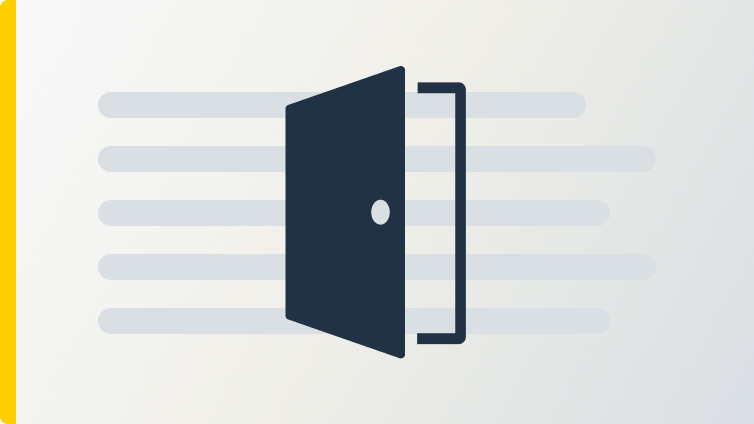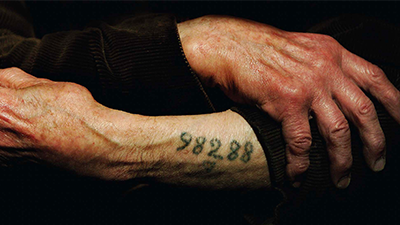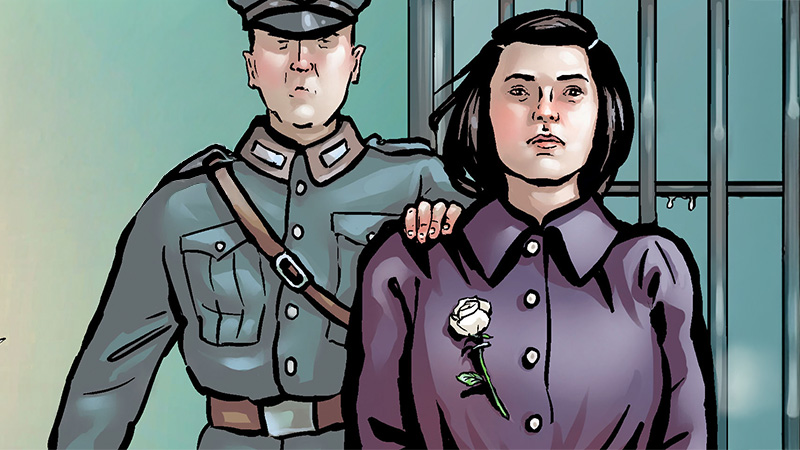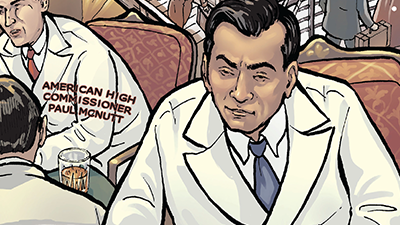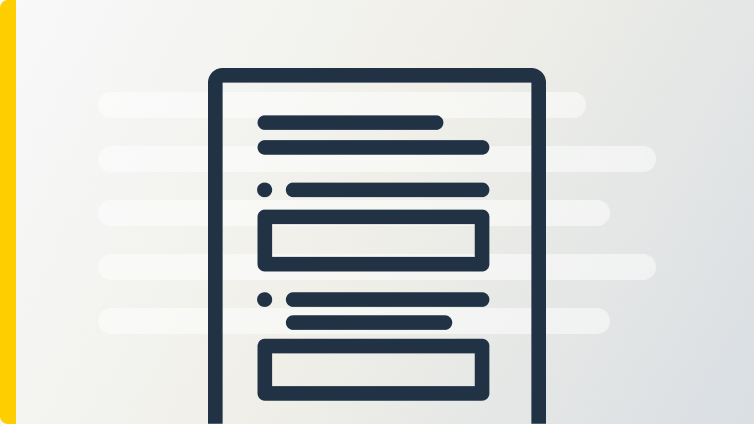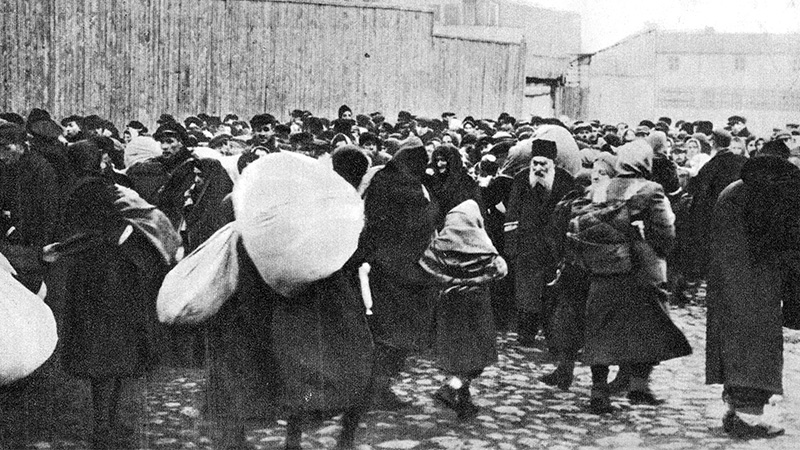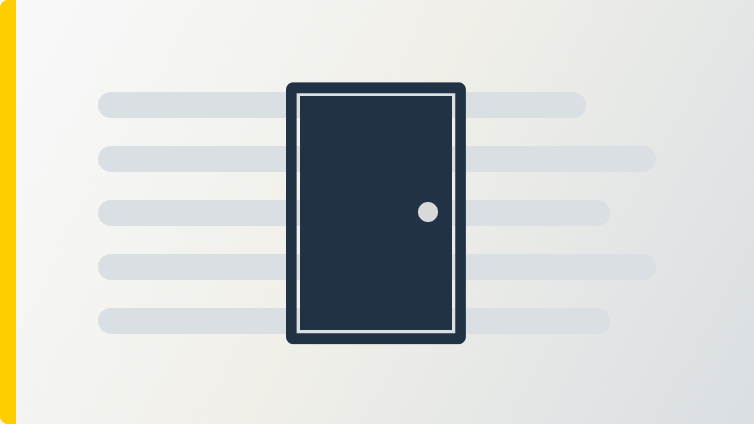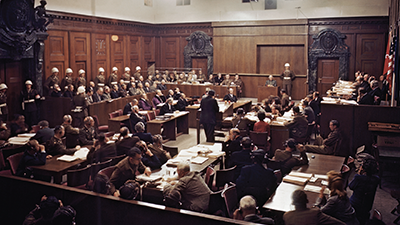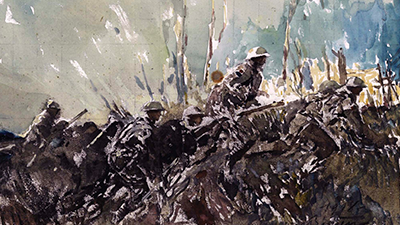The Holocaust
Teacher Resources
Driving Question: How did the world respond to Nazi atrocities?
Learn what happened during the Holocaust and how the world responded. Through powerful stories, sources, and reflection, you’ll consider how individuals and nations made choices in the face of atrocity.
Learning Objectives:
- Use close-reading skills to analyze how the Holocaust unfolded under authoritarian rule.
- Use evidence to reflect on the moral, political, and humanitarian challenges raised by Nazi atrocities.
- Create arguments using historical evidence to support claims and communicate conclusions through formal writing.
Vocab Terms:
- antisemitism
- concentration camp
- ethnicity
- eugenics
- sterilization
Opener: The Holocaust
To teach this lesson step, refer to page 3 of the Lesson 8.7 Teaching Guide.
This lesson if full of rich activities that may need to be modified, adapted, or differentiated for your students. Learn more in the OER Project Differentiation Guide.
Before learning how people responded to the Holocaust, take time to reflect on what it means to be responsible and compassionate in the face of injustice. This activity will help you begin thinking about the moral choices individuals and communities made during one of history’s darkest moments.
Never Again
To teach this lesson step, refer to page 3 of the Lesson 8.7 Teaching Guide.
While we hoped for never again, many of us are responsible for Teaching that genocide didn’t end with the Holocaust. See what strategies other teachers use to address these horrifying events.
In this section, you’ll explore what happened during the Holocaust and how individuals tried to make a difference. Through survivor testimony, primary sources, and the story of Manuel Quezon’s efforts to help Jewish refugees, you’ll reflect on the impact of individual choices and what it really means to say “never again.”
-
Guiding Questions
-
Before you read
Preview the questions below, and then skim the article. Be sure to look at the section headings and any images.
While you read
Look for answers to these questions:
- What laws and policies helped legalize the persecution of Jewish Germans?
- What was Kristallnacht?
- What was the T4 program?
- Who carried out the actions of the Holocaust?
- Why did some women support fascist regimes, even when those regimes restricted their rights?
After you read
Respond to this question: Using the communities frame, how can we explain some of the causes and effects of the Holocaust?
-
Guiding Questions
-
Before you read
Preview the questions below, and then skim the comic, paying attention to things like prominent colors, shapes, and types of text and fonts. How do you know where to start and in which direction to read? What’s in the gutters (the space between panels)? Who or what is the focus of the comic?
While you read
- Why did Sophie and her brother become disenchanted with the Nazi regime?
- How did the White Rose resist the Nazi government?
- Why is the White Rose still commemorated today?
- How does the artist use art and design to tell the story of the White Rose and their acts of resistance during World War II?
After you read
Respond to this question: Do you think the form of resistance that Sophie and the White Rose engaged in was effective? Why or why not?
-
Guiding Questions
-
Before you read
Preview the questions below, and then skim the comic, paying attention to things like prominent colors, shapes, and types of text and fonts. How do you know where to start and in which direction to read? What’s in the gutters (the space between panels)? Who or what is the focus of the comic?
While you read
- What country did Manuel Quezon lead in 1935?
- Why did he welcome Jewish refugees that year?
- What shows that Quezon was guided by his conscience?
- What does the artist mean by calling immigration restrictions a “paper wall”?
- How does the artwork show Quezon moving that wall aside?
After you read
Respond to this question: How does Quezon’s story add to your understanding of the Holocaust and the choices individuals made during World War II?
Closer: The Holocaust
To teach this lesson step, refer to page 5 of the Lesson 8.7 Teaching Guide.
You’ve just learned about one of the worst atrocities in world history. Use this activity to grapple with the difficult questions you have about who was responsible.
Writing: Pre-War Germany
To teach this lesson step, refer to page 5 of the Lesson 8.7 Teaching Guide.
Examine sources and build a historical argument about the Nazi Party’s rise to power. This assessment asks you to connect causes, perspectives, and consequences using evidence from across the lesson.
Justice After Atrocity
To teach this lesson step, refer to page 6 of the Lesson 8.7 Teaching Guide.
Leann how the Nazis used laws to strip away rights—and how the world later responded with the Nuremberg Trials. This article asks you to consider what justice looks like after mass violence.
-
Guiding Questions
-
Before you read
Preview the questions below, and then skim the article. Be sure to look at the section headings and any images.
While you read
Look for answers to these questions:
- What is the “paradox of human rights”?
- What were the Nuremberg Trials?
- Why were the Nuremberg Trials different from earlier trials?
- What were the Nuremberg Principles?
- How did the trials influence the growth of human rights?
After you read
Respond to these questions: Considering the community frame narrative for this course, do you think there is such a thing as an “international community”? Why or why not?
Art as Witness
To teach this lesson step, refer to page 7 of the Lesson 8.7 Teaching Guide.
-
Guiding Questions
-
Before you read
Preview the questions below, and then skim the article. Be sure to look at the section headings and any images.
While you read
Look for answers to these questions:
- What was the purpose of Norman Lindsay’s Fight or Wait?
- What wartime experiences are reflected in Harding’s Traffic to Mont St. Pere and Harrison’s New Year, 1916?
- How did artists like Höch and Magritte respond to the trauma of the First World War?
- What was the goal of Riefenstahl’s Triumph of the Will?
- How do Maoist propaganda and El Salahi’s postcolonial art express different visions of postwar society?
After you read
Respond to this question: How does the artwork featured in this article help us understand the social and emotional impact of the two world wars?

